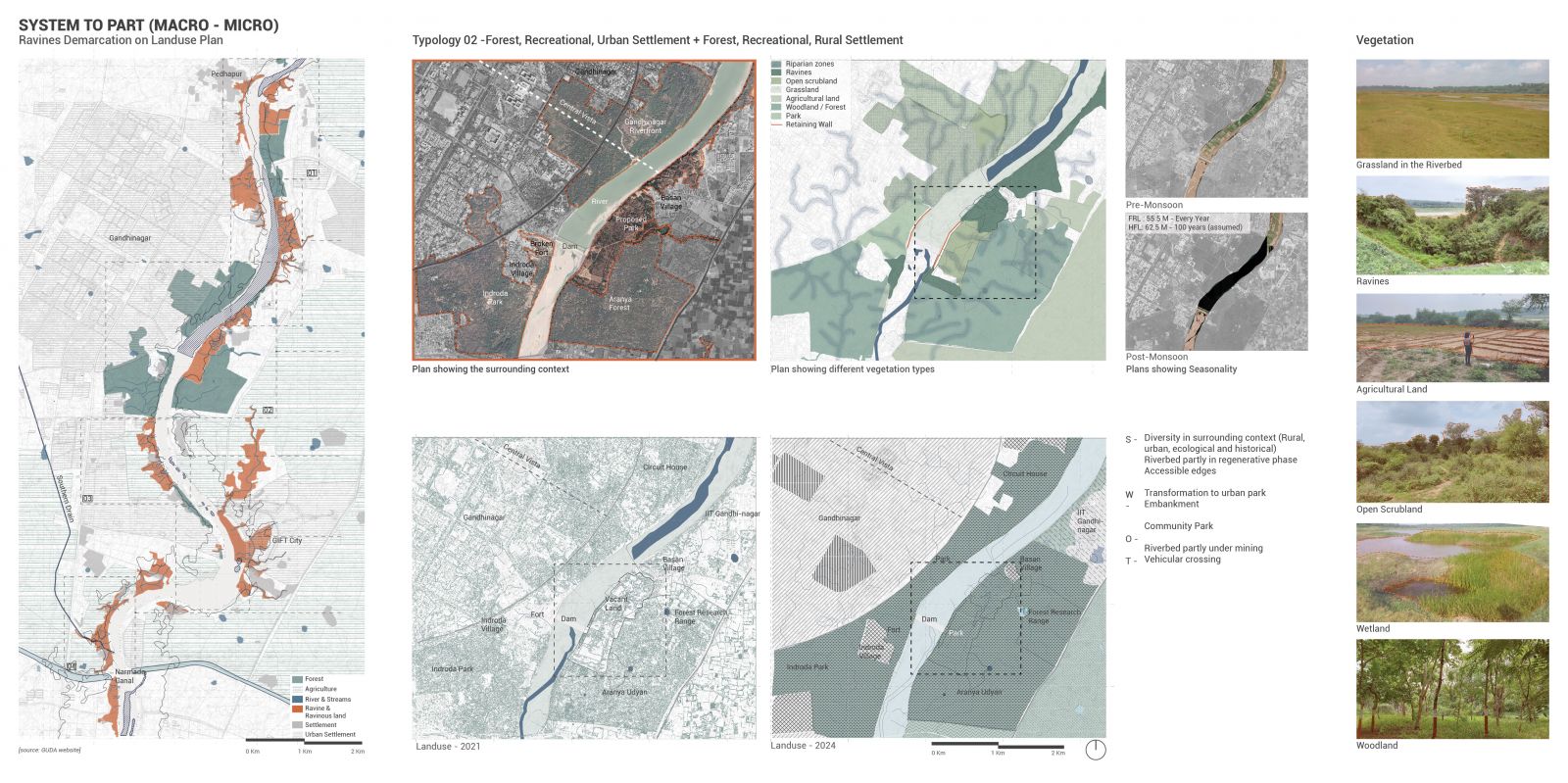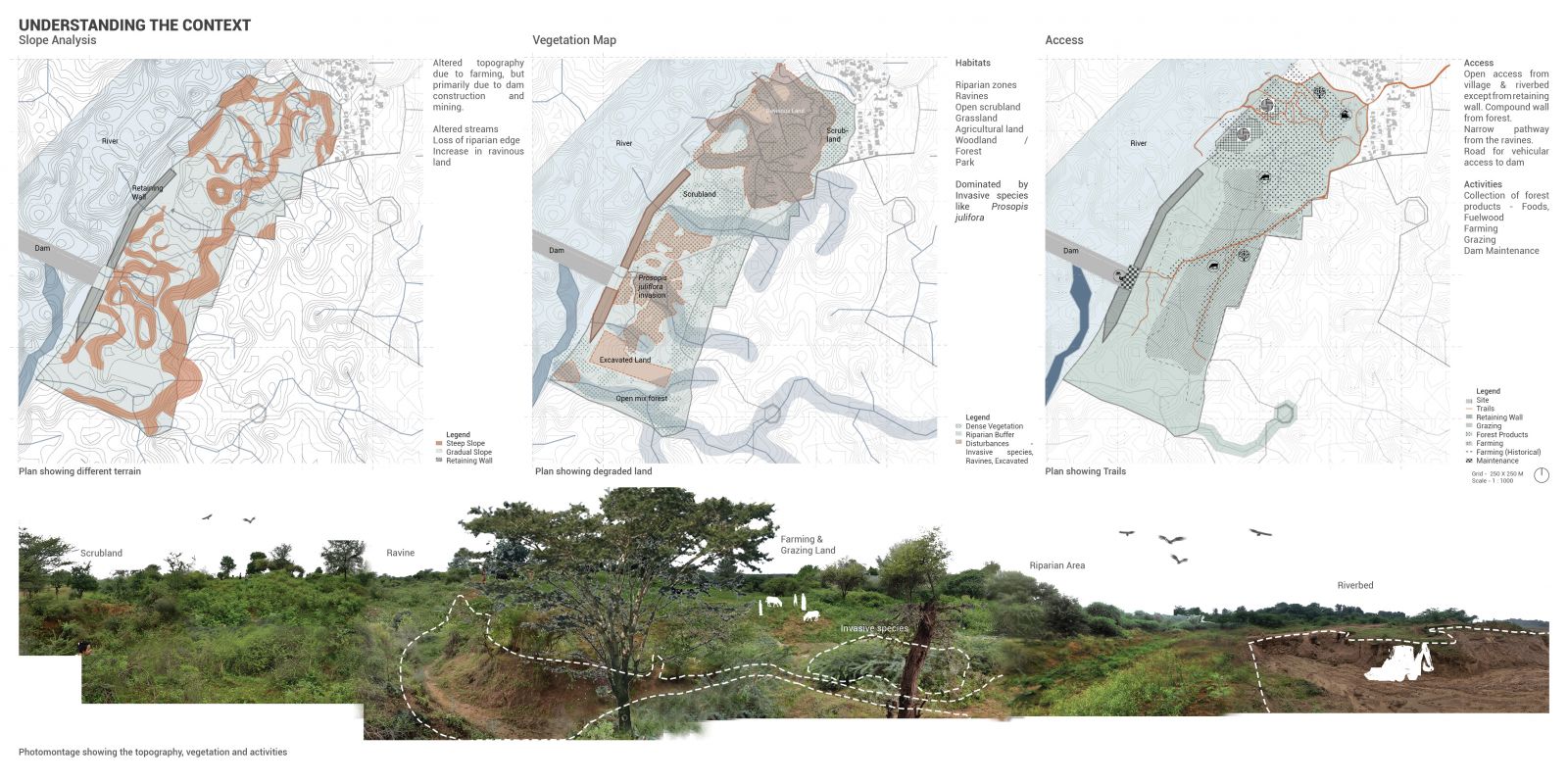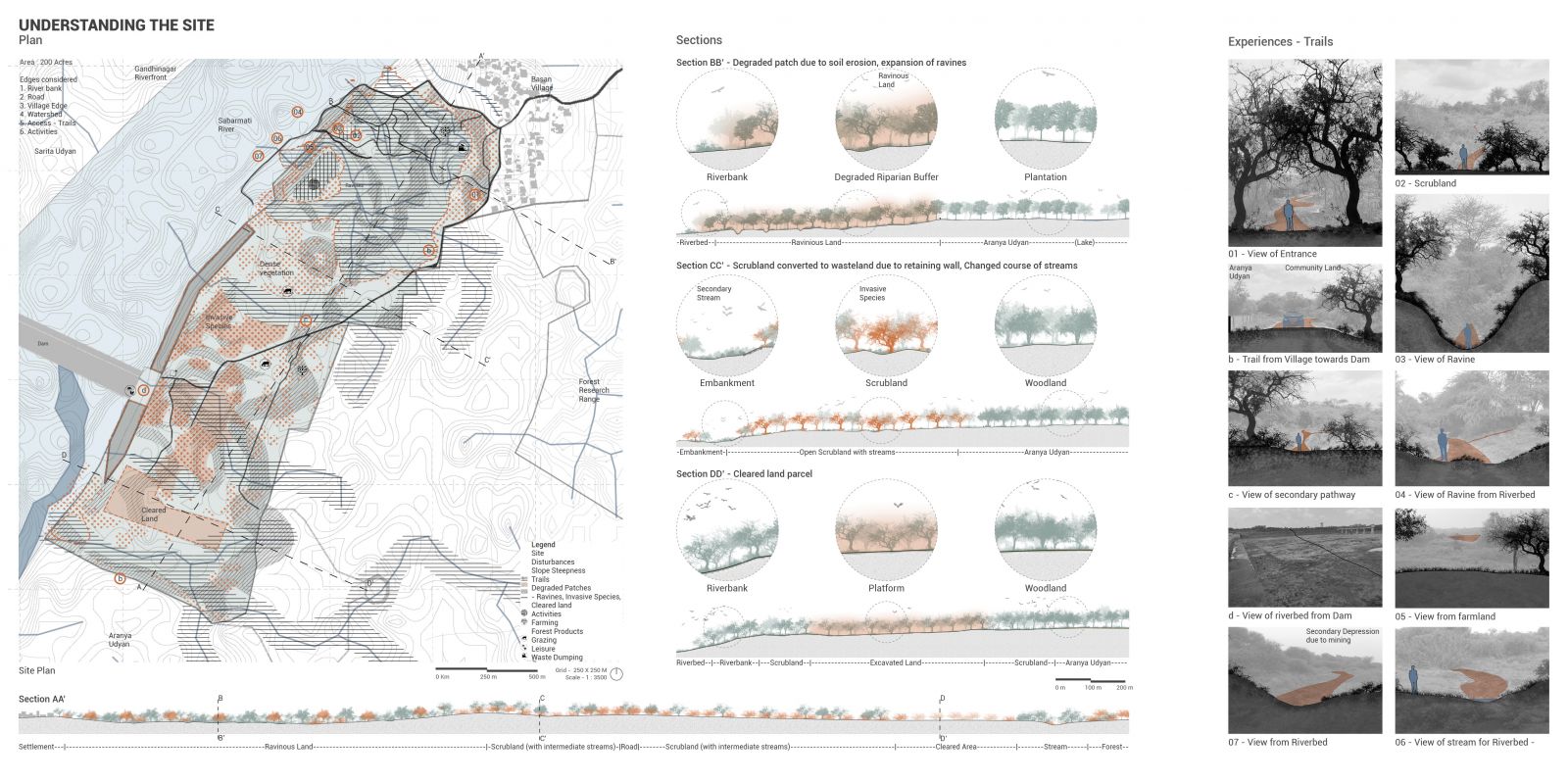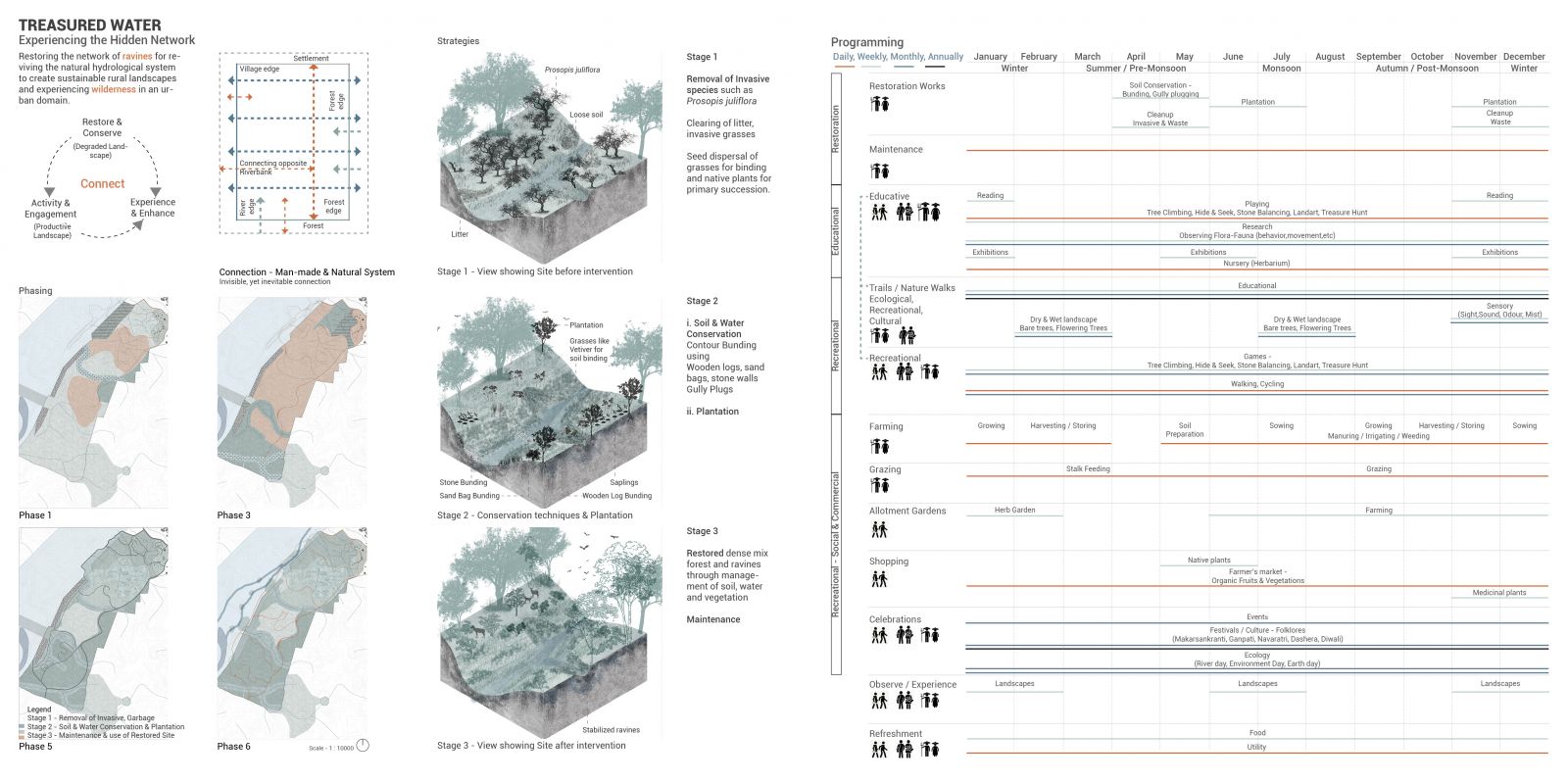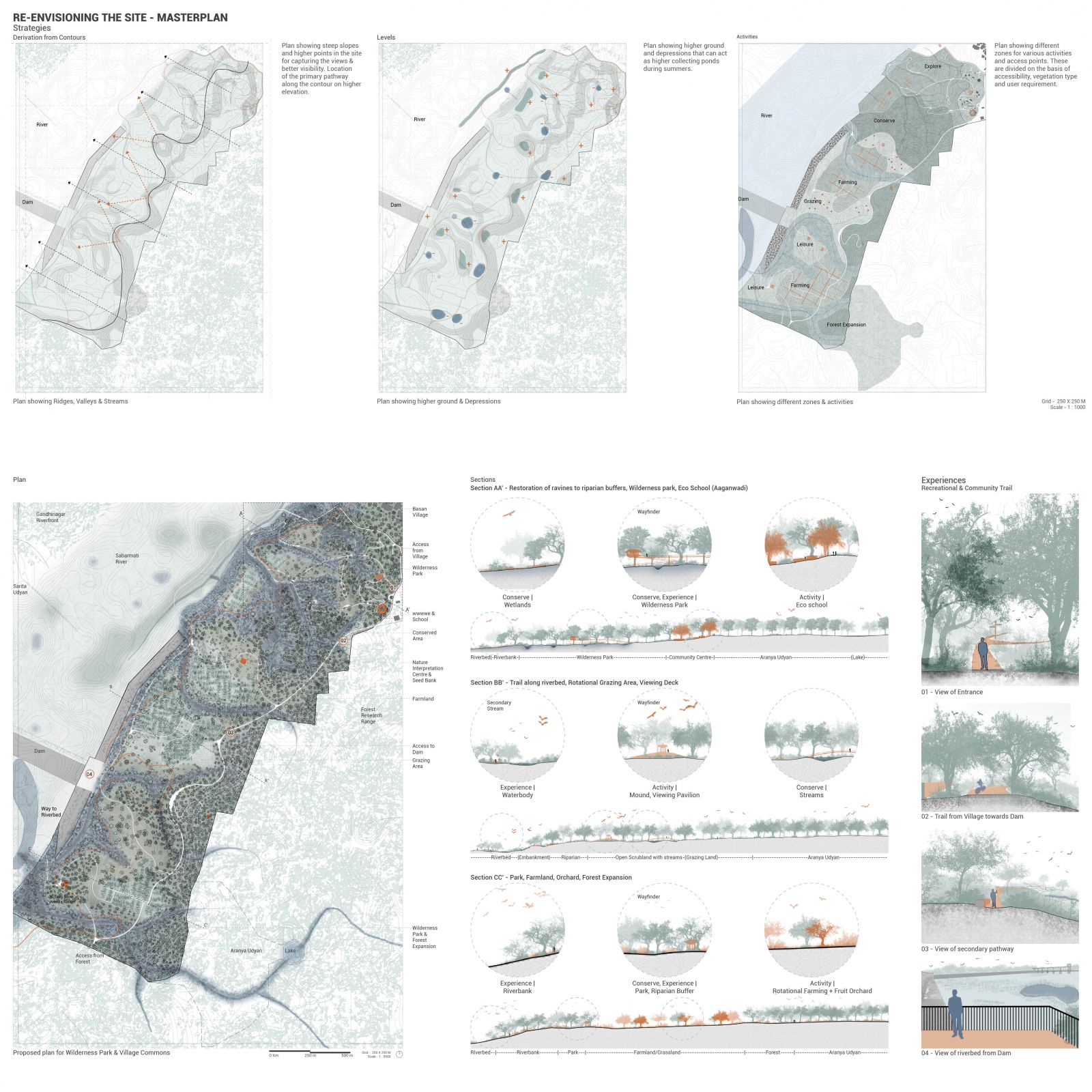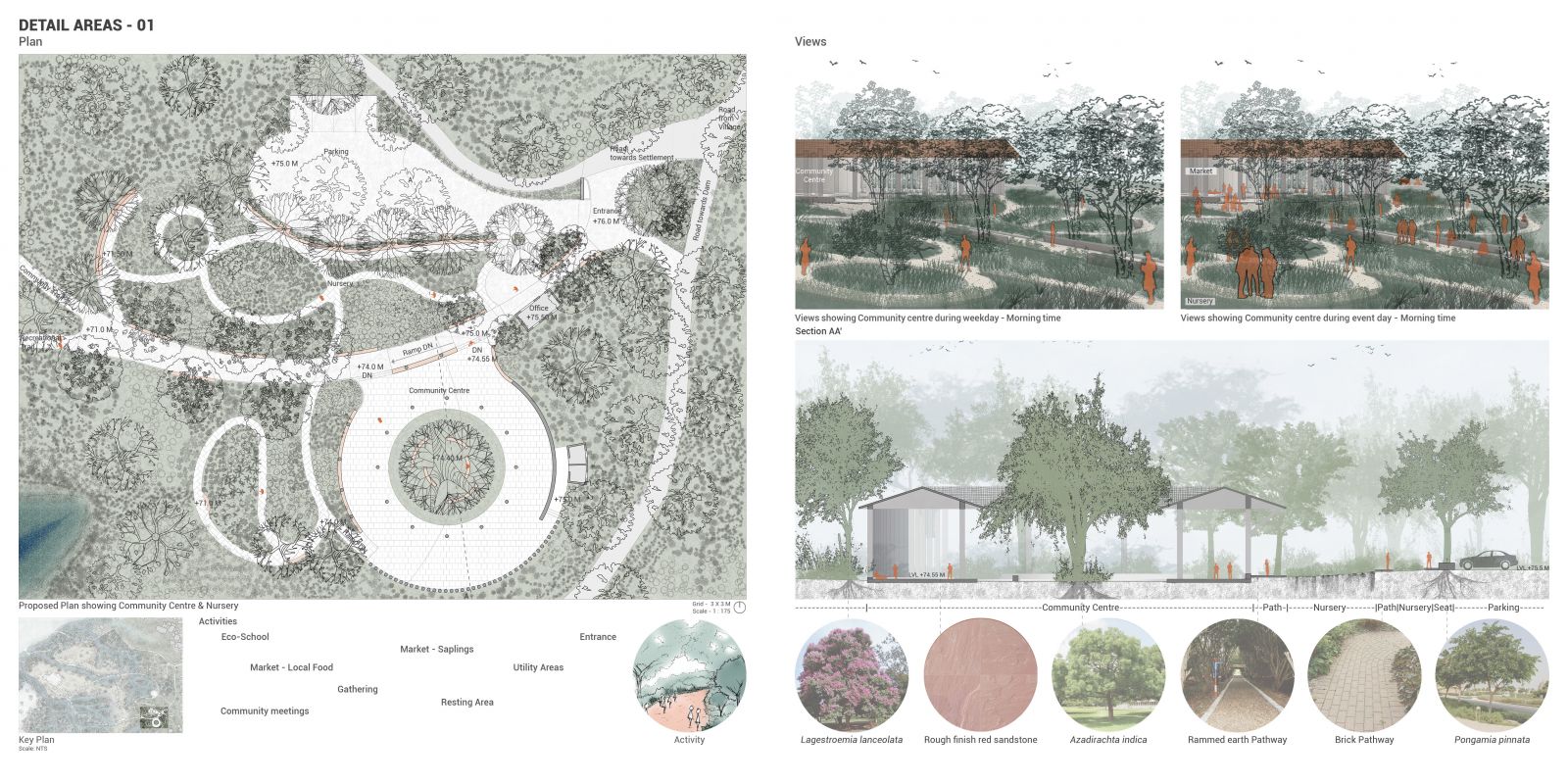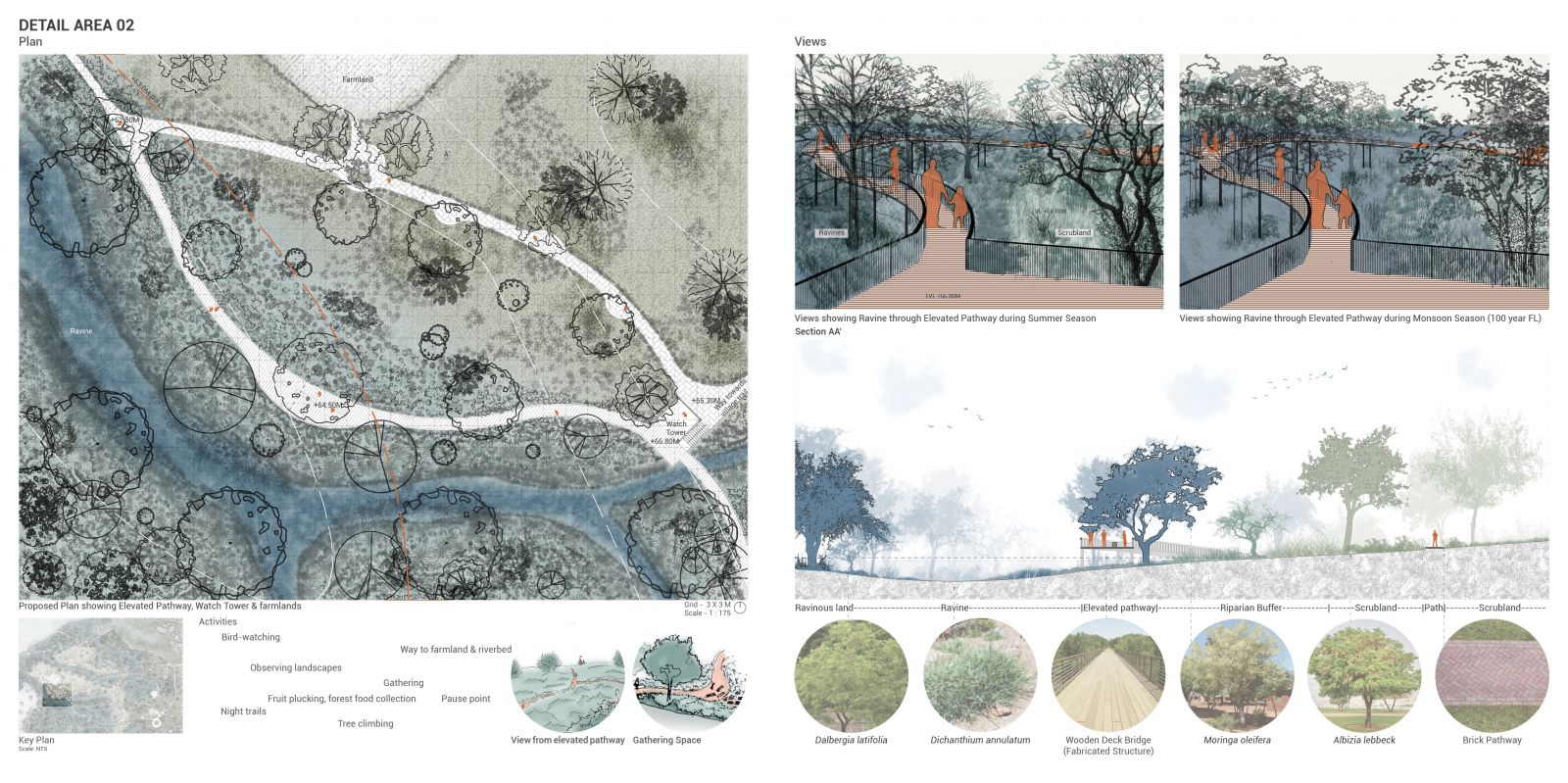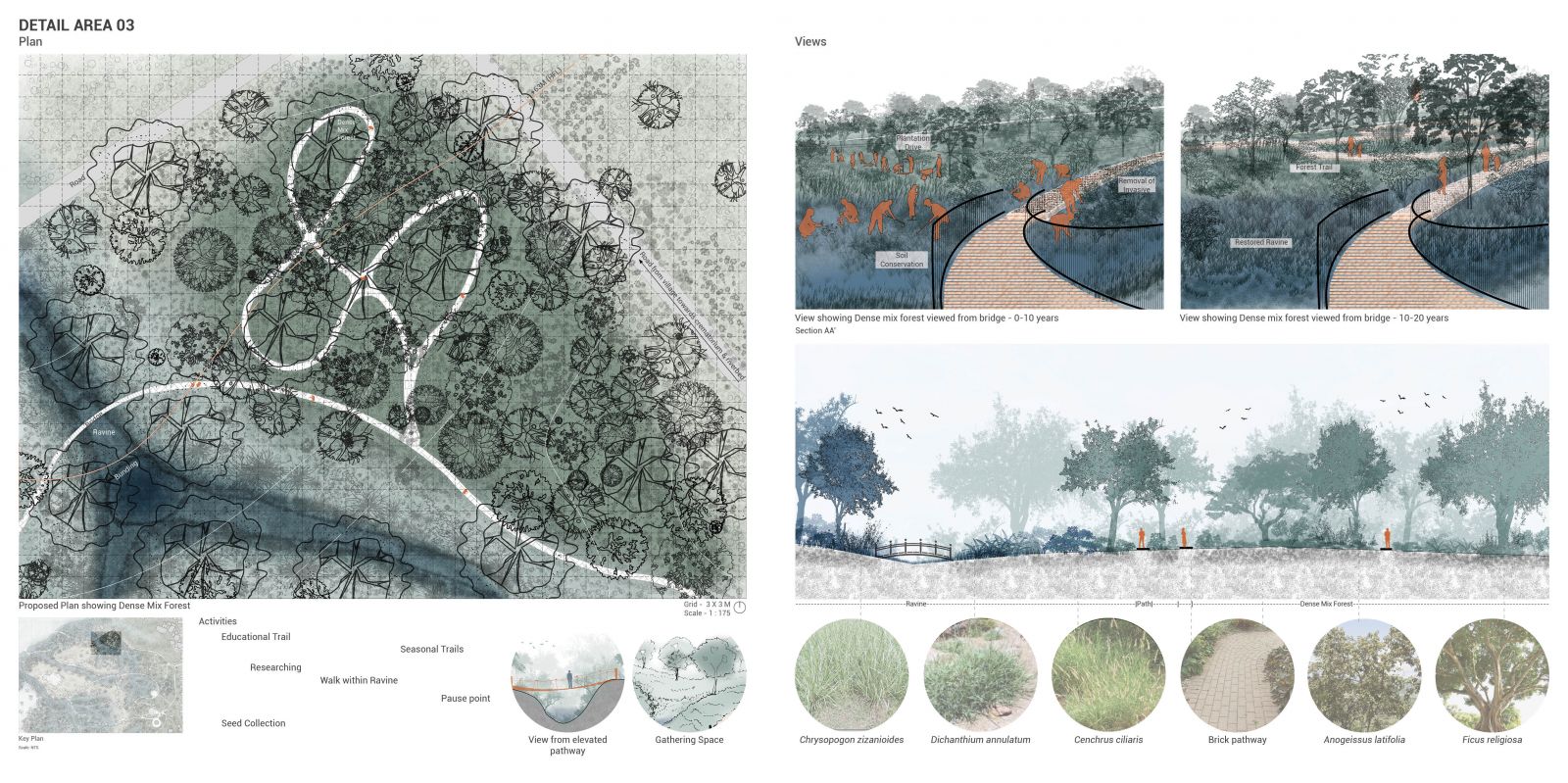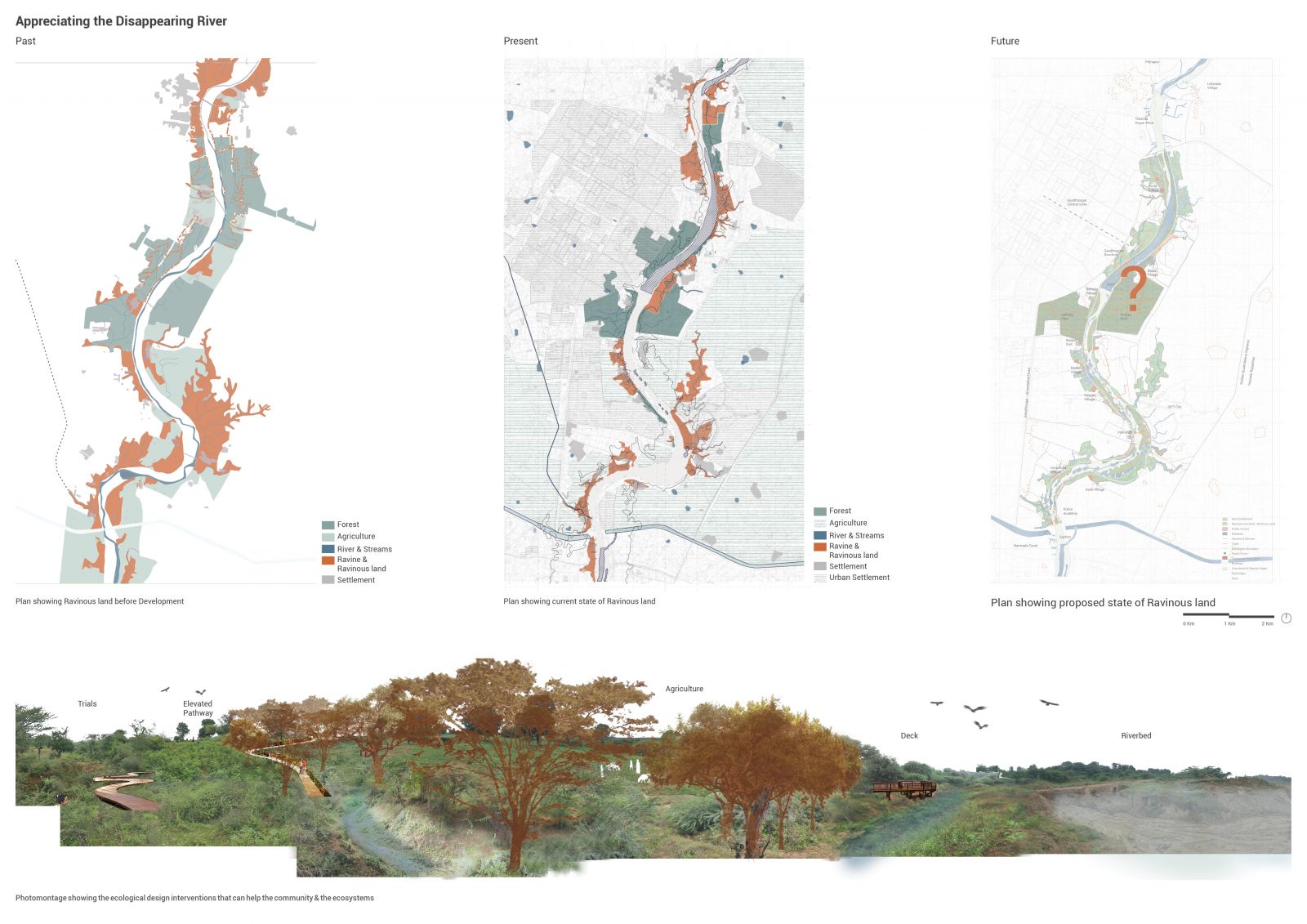Your browser is out-of-date!
For a richer surfing experience on our website, please update your browser. Update my browser now!
For a richer surfing experience on our website, please update your browser. Update my browser now!
The project Treasured water focuses on re-establishing connection between the water systems through the ravinous land that acts as a threshold. The vision for the site was restoring the network of ravines for reviving the natural hydrological system. This site caters to ecological, recreational and productive aspects in an urban context because of being in proximity with the forests, rural settlement & the Gandhinagar development that indicates the potential for recreational park, but which also threatens the natural landscape of the region and the dependency of the rural users. The design intent is to create a landscape that acts as a sponge catering to these various functions. This would help create a sustainable rural landscape and experience wilderness in an urban domain.
View Additional Work